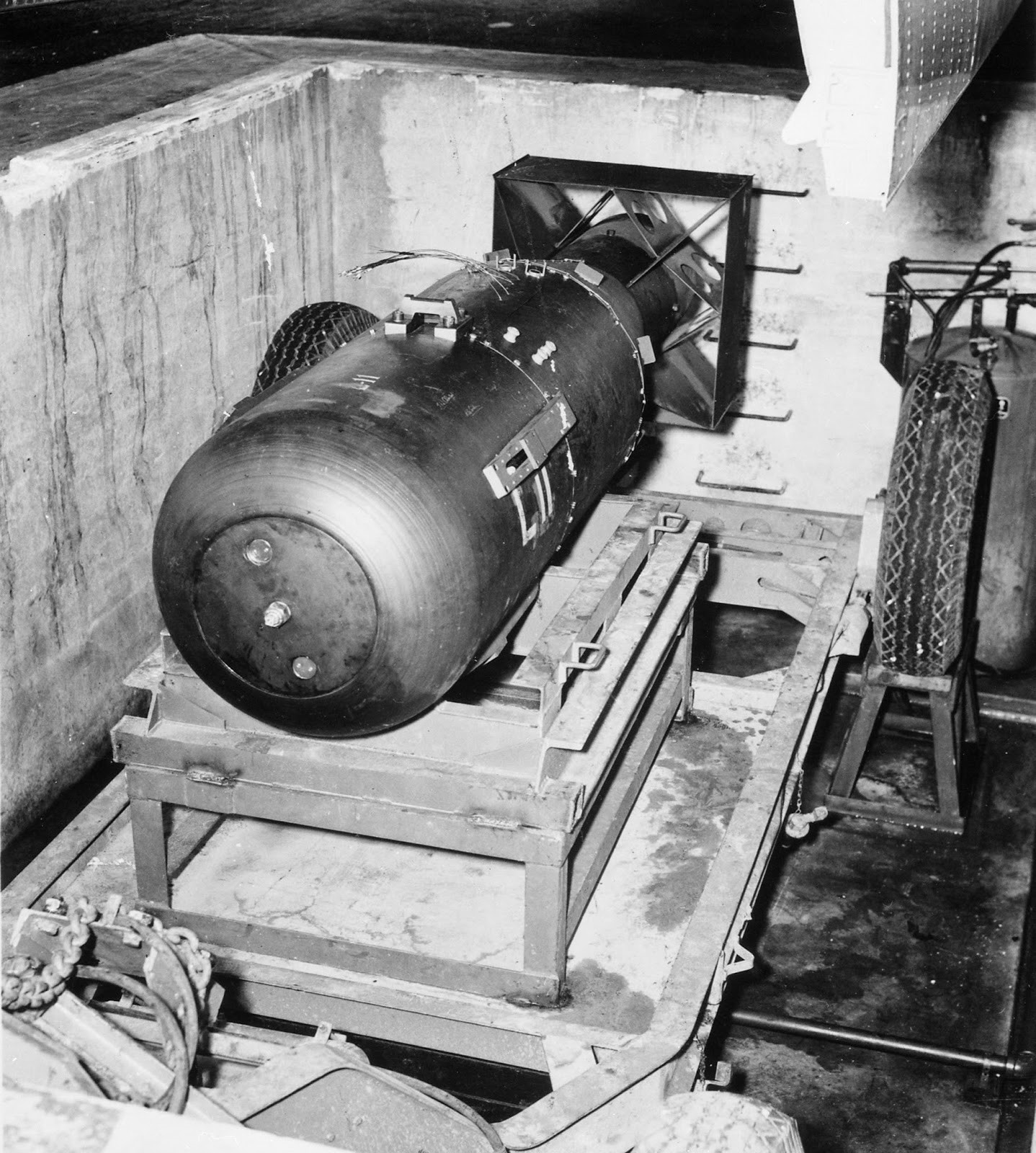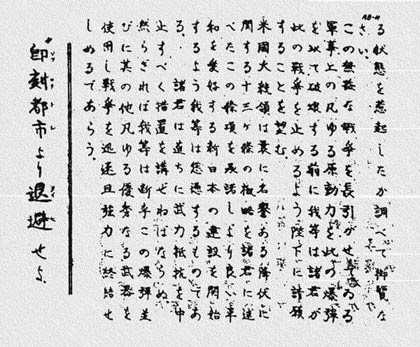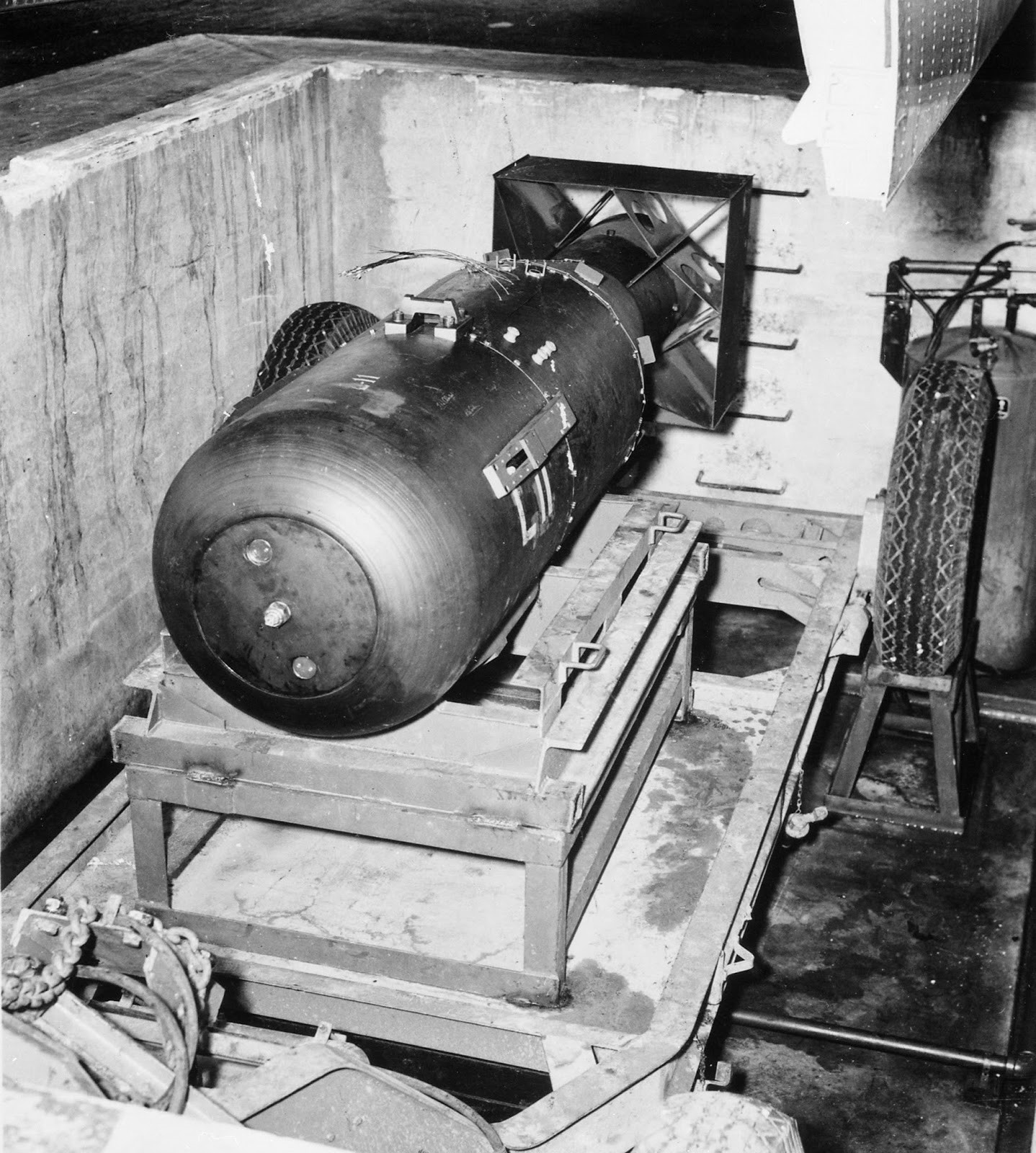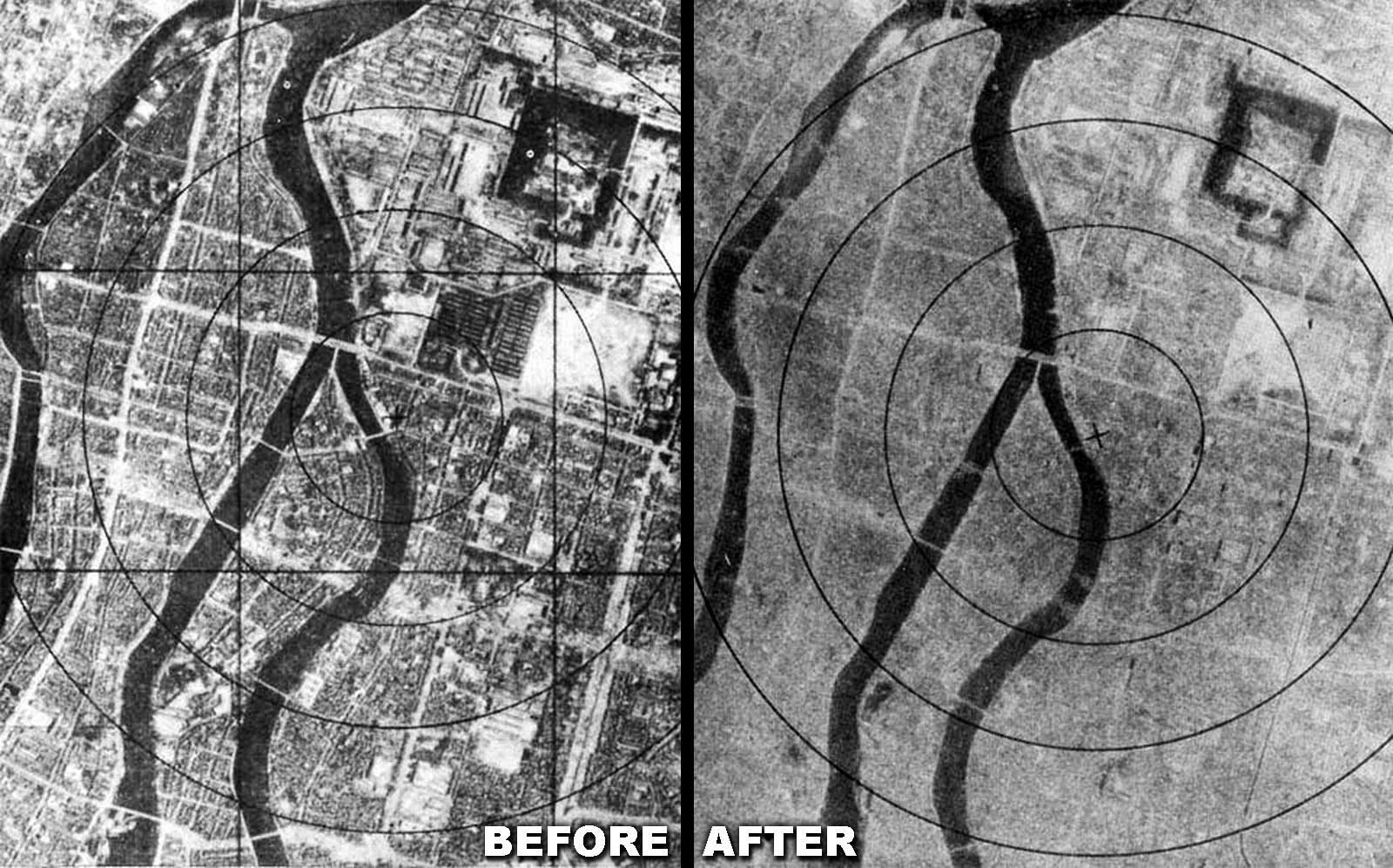August 6, 1945 - Little Boy Atomic Bomb Dropped on Hiroshima
August 4, 2014

Posted by Diana Stanley, Museum Volunteer and Customer Service Representative
“TO THE JAPANESE PEOPLE: America asks that you take immediate heed of what we say on this leaflet. We are in possession of the most destructive explosive ever devised by man. A single one of our newly developed atomic bombs is actually the equivalent in explosive power to what 2000 of our giant B-29s can carry on a single mission. This awful fact is one for you to ponder and we solemnly assure you it is grimly accurate.” (American leaflet warning Japan to surrender)
|
|
|
These warning leaflets were dropped in 14 major Japanese cities before the bomb, but not in Hiroshima. |
Sixty-nine years ago on August 6, 1945, the U.S. dropped a nuclear bomb on the Japanese city of Hiroshima. Hiroshima was a military target. It was the 2nd Army headquarters of the Japanese military and controlled much of the defenses in south Japan. At the time, it had a population of about 340,000 people and a number of military personal which made it roughly the size of modern day Wichita. The city laid on a flat plane and had many wooden buildings.
A few days before, the U.S. issued the Potsdam Declaration which asked Japan for an unconditional surrender. Japan responded with Mokusatsu which means “to ignore.” The American forces dropped leaflets (such as the one pictured above) in 14 major Japanese cities warning the citizens to surrender, but they dropped nothing in Hiroshima. Thus, there was little warning when on August 6, 1945, the crew of the B-29 bomber Enola Gay dropped "Little Boy." Little Boy was the bomb that changed the world.
|
|
|
The "Little Boy" atomic bomb was developed by the Manhattan Project. |
The Manhattan Project developed the atomic bomb in secret in an attempt to outrace the Nazis. Winston Churchill said, "By God's mercy, Britain and American science outpaced all German efforts. These were on a considerable scale, but far behind. The possession of these powers by the Germans at any time might have altered the result of the war." By the time of Hiroshima, one news article in Time Magazine claimed the American government spent almost two billion dollars on research for the bomb. This was a staggering amount for the time. There was a lot of debate over how big Little Boy was, but most agreed it was roughly equal to 15 kilotons of dynamite. It weighed 9,700 lbs. Once designed, various plants and factories made its individual components so that no one person had the complete schematics. After much testing, pilots were advised that if they were going to crash, they should attempt to do so on land. The bomb casing was reinforced so that only an impact of 400 times the force of gravity could activate the bomb, but if the uranium inside was immersed in water it would leak massive amounts of radiation.
The bomb exploded a quarter after eight in the morning in Hiroshima. The force of blast immediately vaporized all but fifty reinforced buildings within a mile. Almost immediately the giant fireball, 10,830 F° hot, blazed into existence for a two mile radius. The heat was so great that it reduced one unfortunate victim to a shadow on a now permanently bleached white stone. The wooden buildings and flat plain worked against the people of Hiroshima. The fire easily burned the flammable materials and was able to spread out, jumping natural and man made barriers to join into one giant inferno. American scientists did not account for the effect of radiation. It was lethal and even if one escaped the fireball, citizens of Hiroshima died of its poison for months to come. 80,000 people died instantly the day of the bomb. Although there are varying numbers, most agree that due to radiation poisoning the actual death toll was about 130,000 people. This number does not include many of the people that died of cancer from the radiation years after the bombing.
|
|
|
Before and after the "Little Boy" was dropped on Hiroshima. |
Why did the U.S. use the “Cosmic Bomb?” First, without the bomb, America expected to do an amphibious landing like in Normandy. Due to Japan’s heavy defenses it would have cost an estimate of 1,400,000 casualties and 400,000 to 800,000 dead. Add the number of soldiers already killed in the war against Japan, and more than twice as many Americans would have died invading Japan than in all the other theatres combined. Also, America had been at war for four years and was tired of fighting. Worse, the Japanese government and military told civilians that they faced rape and torture if captured by the Americans. Because of this propaganda, Japanese civilians and soldiers believed it was better to die than be captured. As the Americans progressed while on the island hopping campaign, there were at least two major incidents of mass suicides of civilians. The American military worried about what might happen if they invaded. Finally, the bomb may have been a warning to the Soviet Union and the start of the Cold War. The U.S. demonstrated they had the bomb and were willing to use it.
Visit the Museum of World Treasures to learn more about World War II. Please visit our website or call 316.263.1311 for more information.



